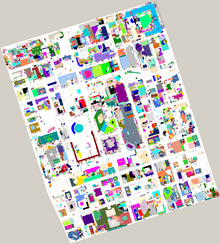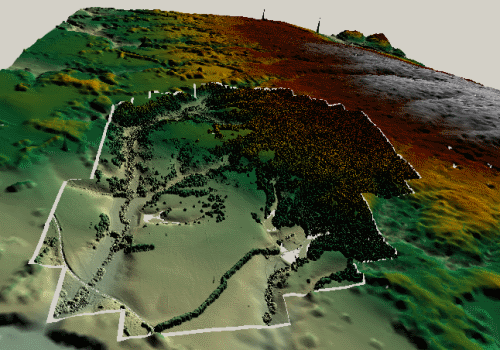Edge Detection
Segmentation
 Since the framework performance has reached the goals that I set for myself, I have paused work on tiling optimizations and moved on to algorithm development. The first step was to build a raster format data source. I decided to go with a non-interleaved tiled binary format, which fits well with my intended usage. In the future, I will make a more robust determination of my needs with regard to raster support.
Since the framework performance has reached the goals that I set for myself, I have paused work on tiling optimizations and moved on to algorithm development. The first step was to build a raster format data source. I decided to go with a non-interleaved tiled binary format, which fits well with my intended usage. In the future, I will make a more robust determination of my needs with regard to raster support.
One of the first high-performance algorithms that I developed in years past was a basic region-grow. I have now implemented my tile-based segmentation algorithm (region-growing) for 2D analysis. This allows me to perform segmentation on an interpolated cloud or raster, using the tiles to allow a low memory footprint.
Soon, I will need to make a vector output source, possibly SHP. That will give me better geometry to visualize than the textured meshes I am currently using in the 3D viewer.
Tile Stitching
 I have completed a basic tile stitching algorithm for use in completing the 3D mesh view. At this point, it only stitches equal resolutions, so it will stitch low-res tiles together and high-res tiles together, but it will leave a visible seam between tiles of different resolutions. Obviously, that is not a difficult problem, since I am only stitching regular meshes at this point. However, I do plan to get irregular mesh support eventually. Currently, I have an incremental Delaunay implementation, but the C# version is much slower than the original C++, to the extent that it is not worth running. The S-hull implementation that I downloaded is much faster, but does not produce correct results.
I have completed a basic tile stitching algorithm for use in completing the 3D mesh view. At this point, it only stitches equal resolutions, so it will stitch low-res tiles together and high-res tiles together, but it will leave a visible seam between tiles of different resolutions. Obviously, that is not a difficult problem, since I am only stitching regular meshes at this point. However, I do plan to get irregular mesh support eventually. Currently, I have an incremental Delaunay implementation, but the C# version is much slower than the original C++, to the extent that it is not worth running. The S-hull implementation that I downloaded is much faster, but does not produce correct results.
The primary limitation of the tile-based meshing and stitching is that WPF 3D has performance limitations regarding the number of MeshGeometry3D instances in the scene. For small to medium-sized files, there may be up to a few thousand tiles with the current tile-sizing algorithms. WPF 3D performance degrades substantially when the number of mesh instances gets to be approximately 12,000. Massive files may have far more tiles than that, and adding mesh instances for the stitching components makes the problem even worse. I have some ideas for workarounds, but I have not yet decided if they are worth implementing since there are already so many limitations with WPF 3D and this 3D preview was never intended to be a real viewer.

CloudAE Preview Announcement
CloudAE development has reached a preview stage, so I am beginning this blog to share my development efforts. I solve a number of problems as I develop applications, and I no longer have the energy to share solutions on forums and message boards. Perhaps I will find the motivation to provide details here as I run benchmarks and resolve issues that interest the community. We shall see.



